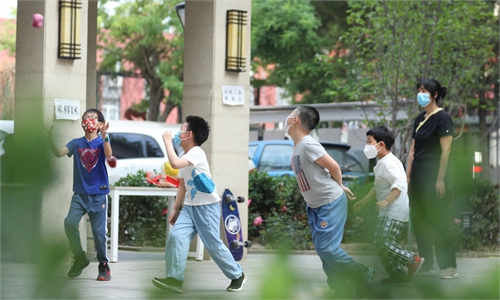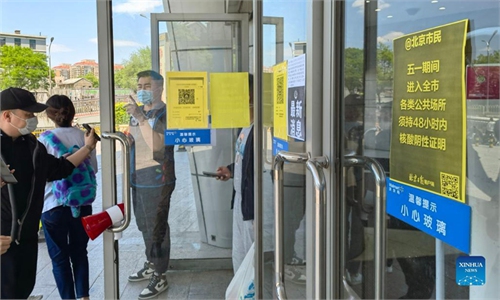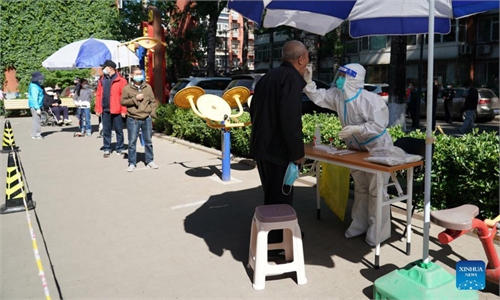Beijing to gradually return to normal with caution as Omicron flare-up effectively tamed in 37 days
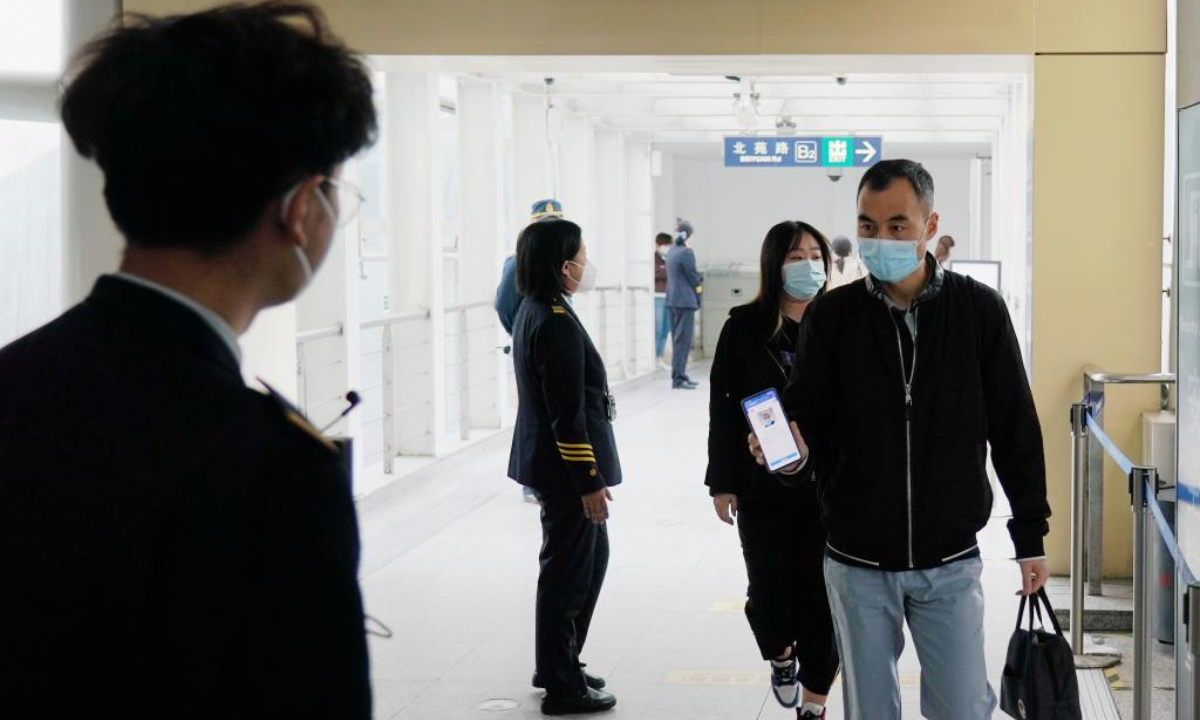
A passenger shows his health QR code before entering a subway station in Beijing, capital of China, May 17, 2022. Photo:Xinhua
Beijing authorities on Saturday said the latest COVID-19 epidemic has been effectively contained after 37-day of combat against the ferocious Omicron variant. The city is gradually returning to normalcy with caution and targeted measures to tackle the risk of resurgence .
Beijing has effectively brought the latest COVID-19 epidemic under control, with new confirmed cases dropping for six consecutive days and eight districts reaching zero-COVID status at the community level, a municipal official said at a press briefing.
It took 37 days, from April 22 to May 28, for the city to bring the latest COVID-19 flare-up under control, and Chaoyang district, the largest and most populous district set the first controlled area, has begun to reopen most areas with public transportation resuming service, according to the briefing.
The main experiences of Beijing's phased success in fighting the Omicron flare-up are active and flexible responding moves and precisely targeted and strict control measures, which could be an effective approach for large cities to combat the Omicron as soon as possible, according to experts.
The overall epidemic situation in Beijing is now on a downward trend, and sporadic cases in individual districts are all under control. The current outbreak of the epidemic has been effectively controlled, according to Xu Hejian, a spokesperson for the Beijing municipal government on Saturday.
Beijing reported 23 new COVID-19 infections on Friday, and 12 new confirmed cases as of 3 pm Saturday, said Liu Xiaofeng, deputy head of the Beijing municipal disease prevention and control center, during the press briefing.
A Beijing-based expert told the Global Times that swift and decisive prevention measures taken by Beijing has helped to bring this round of epidemic under control within 40 days. The high temperature in summer also helps to prevent the virus from spreading widely.
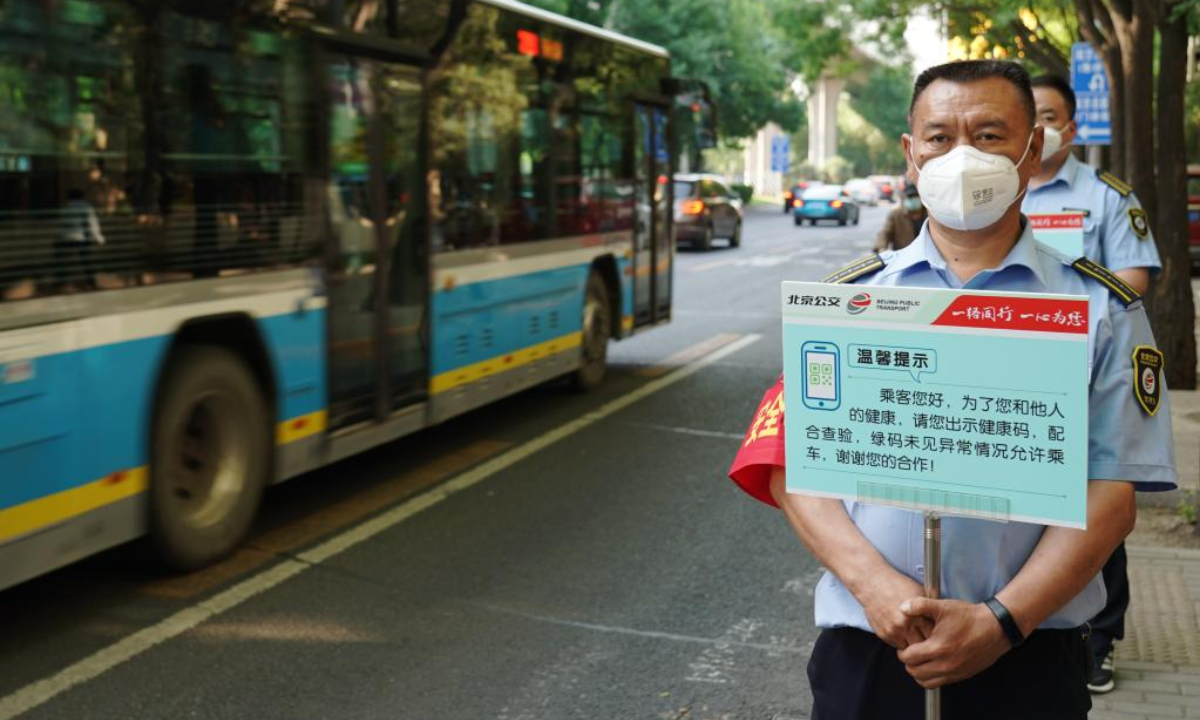
Staff members of Beijing Public Transport hold signboards to remind passengers of showing health QR codes at a bus stop in Beijing, capital of China, May 17, 2022. Photo:Xinhua
Wang Guangfa, a Beijing-based respiratory expert, told the Global Times that Beijing has taken a very active approach in combat against this most recent Omicron flare-up. In addition to the normalization of nucleic acid testing, Beijing has taken precisely targeted control measures instead of a "citywide lockdown."
"Targeted and frequent nucleic acid testing for special groups may be an experience for epidemic prevention and control in China, which is proven effective in Beijing's dealing with the latest round of epidemic, Wang said.
Except for controlled areas, public transportation, metros and taxis are resuming service in Chaoyang, Shunyi and Fangshan districts. Starting from Sunday, Fangshan and Shunyi districts adjusted from remotely working to work in offices. Chaoyang and Tongzhou districts, which have reported no new community transmissions for five consecutive days, will appropriately increase the rate of people retuning to working, the new control measures confirmed.
Hotels and guesthouses in five districts of Mentougou, Pinggu, Huairou, Miyun and Yanqing will reopen while museums, gyms and other public venues in areas with no new community-level cases in seven days can accept a limited number of visitors. In districts with no new community cases for 7 consecutive days, courier and takeaway service personnel can enter residential communities, according to the briefing.
However, experts noted that the prevention work cannot relax due to remaining risks even as there has been no new cases outside controlled areas for two days.
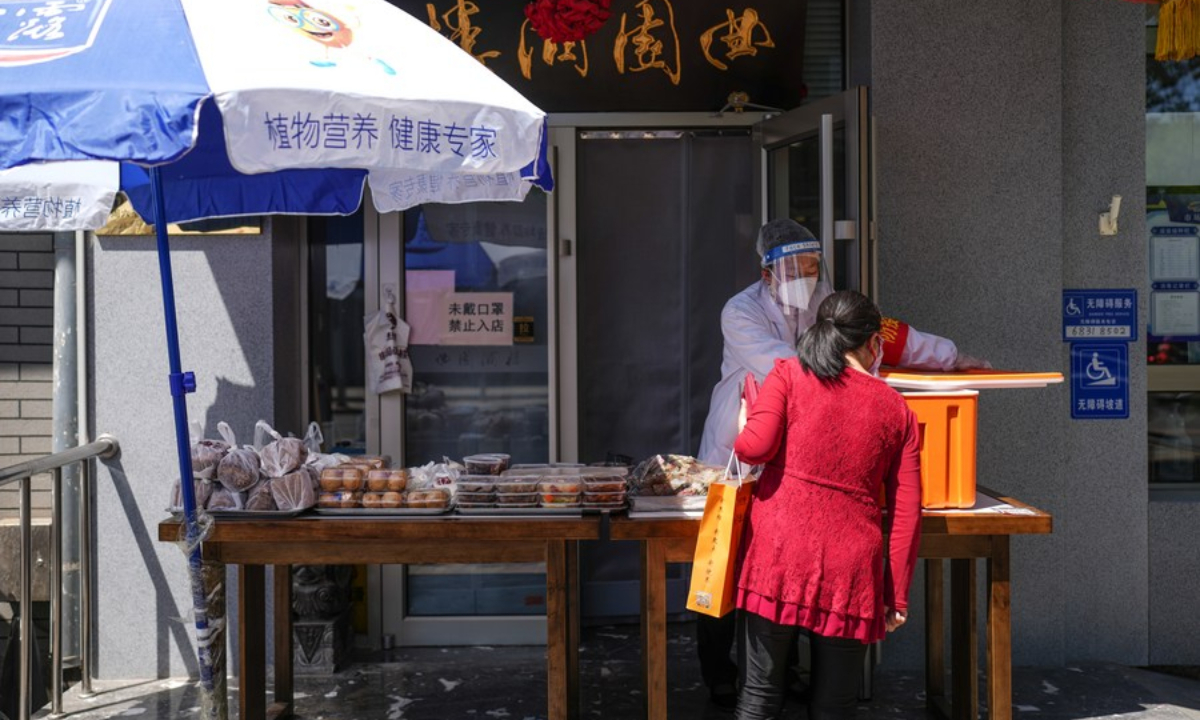
A resident buys food at a restaurant in Beijing, capital of China, May 14, 2022. Photo:Xinhua
There are still seven high-risk areas and 16 medium-risk areas in the city. The city will continue the suspension of eat-in dining. Postponing the return of primary and secondary schools, kindergartens to campus will continue, while colleges will continue to implement close-loop management, according to new epidemic control measures.
Temperature testing, nucleic acid negative certificate within 48 hours, and health code scanning will still be required for entering various public places, units, buildings and communities, according to government issued epidemic control measures issued.
Beijing's sports bureau announced on Saturday that from Sunday, gyms and fitness centers will be reopened in an orderly manner in districts with no new community cases for 7 consecutive days, while dynamic epidemic prevention measures are adopted. In these districts, gyms can open at a 50 percent customer limits.
Offline sports training citywide will not resume for the time being.
Although due to effective epidemic prevention and seasonal factors, the control of the epidemic in Beijing will create favorable conditions for the resumption of work, the city must not lose focus, because there are still risks of imported cases, Wang said.
Global Times
